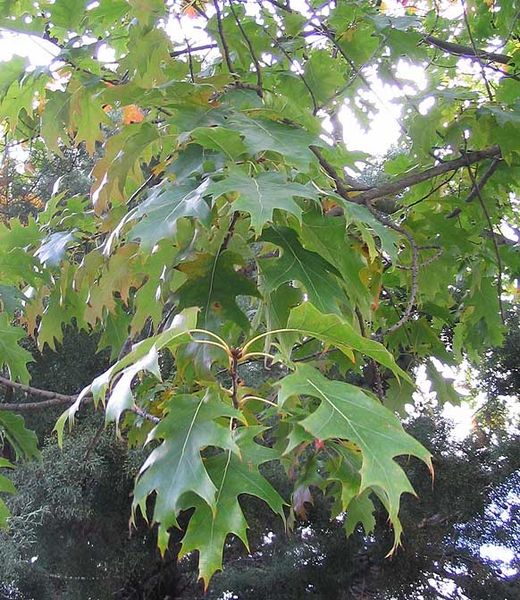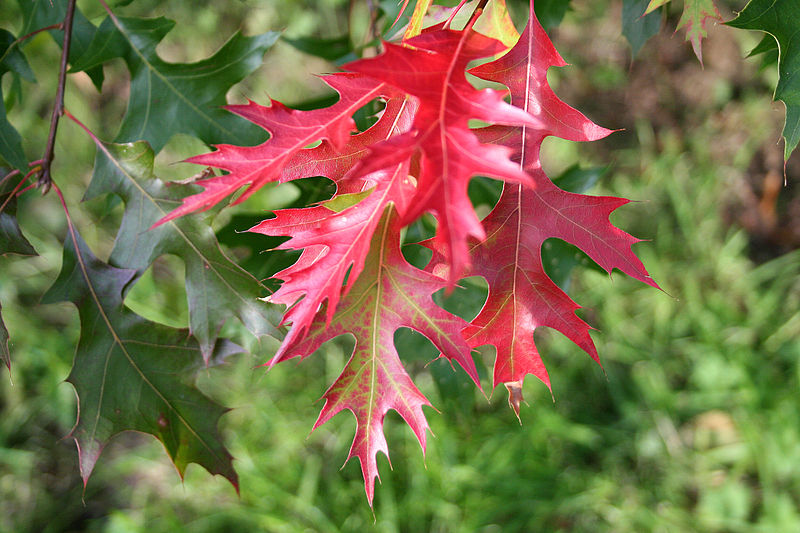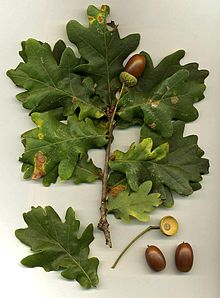Scarlet oak (Quercus coccinia) is a type of red oak that has pointed tips to the leaf lobes, and between the leaf lobes it has a somewhat closed c-shape to the curve of the leaf edge.

Northern red oak or champion oak (Quercus rubra) can be confused with scarlet oak. Can live for 500 years!
Pin Oak (Quercus palustris) is also a type of red oak that is sometimes called swamp oak - very suitable for St James Ave! It too has pointed tips to the leaf lobes, but unlike the scarlet oak the leaf eadge between the lobes forms a more open u- or v-shape. Interestingly, this oak tends to retain its dead leaves on the younger branches - it may look odd but it's normal! Can live over 100 years.
The English oak (Quercus robur) or white oak, is an English national emblem, having sheltered the yet to be crowned King Charles II in 1650 during the English Civil War, provided wood for the English navy when Brittania ruled the waves, and is also the tree in which the legendary Robin Hood had his hideout. Many of these are over 1000 years! The leaves are really quite different from the scarlet and pin oaks, with rounded edges to the lobes.
Expected lifespans are difficult to estimate as longevity depends on many things, including climate and the presence or absence of stresses (chainsaws etc!).
Overall, oaks are an impressive group of plants with 300 to 600 species depending on how you define species (which is itself a botanical conundrum). In case you wondered they are broadly divided into 5 sections:
- The white oaks of Europe, Asia and North America
- The Hungarian oak and its relatives of Europe and Asia
- The Turkey oak and its relatives of Europe and Asia
- The Canyon live oak and its relatives, in southwest United States and northwest Mexico.
- And last but not least, the red oaks of North America, Central America and northern South America, and so named because of the autumn leaf colours.


